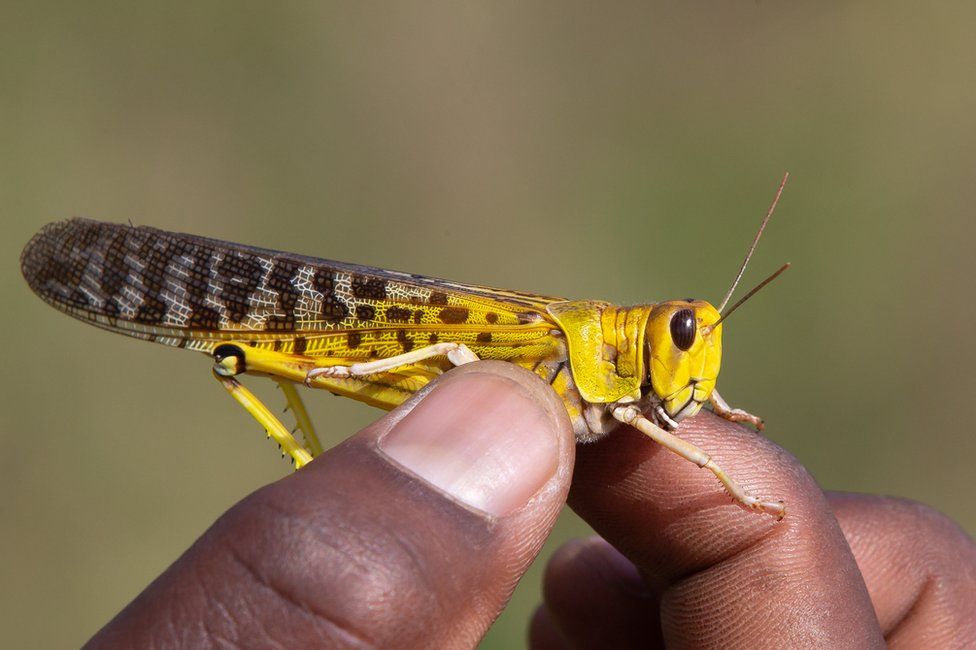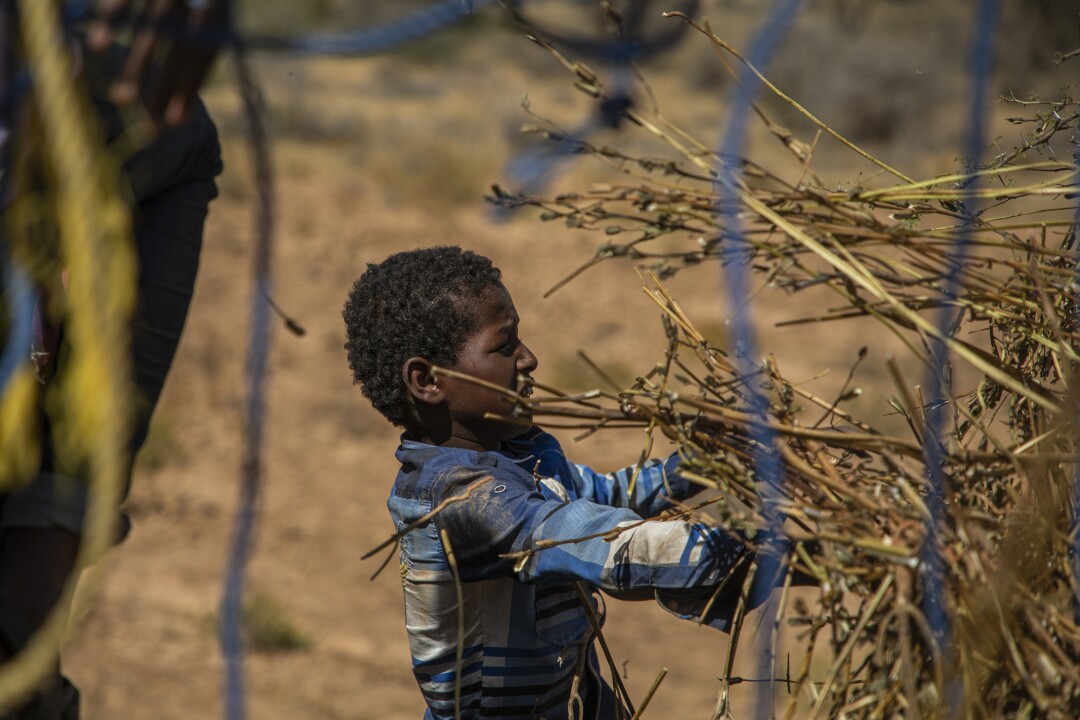A Biblical Plague
"[Locusts] don't fly 24 hours a day like a particle. They take off in the morning after a certain time and land just before sunset at a certain time.""And then they rest and they go again.""So often we will get out-of-the-blue reports of swarms landing on the coast of the Red Sea.""The concern of the recipient country is how many more swarms are we going to get and where are they coming from?"Keith Cressman, senior locust forecasting officer, UN Food and Agriculture Organization
 |
| Men try to repel locusts flying over grazing land in Lemasulani village, Samburu county, Kenya Reuters |
News bounced around the world lately of an historic surge of desert locusts whose wholesale numbers threaten agricultural crops that countries depend on to feed their populations. East Africa has seen a recent upsurge of arrivals of a plague of vegetation-devouring locusts darkening the skies as they fly over unfortunate countries, then settle in countless numbers to ravage the landscape below. Scientists eager to find ways to alert nations to defensive action have developed a sophisticated air pollution model in anticipation of where and when the pests are blown by prevailing winds.
Extreme rainfall creates breeding conditions that favour the destructive pests, and over the last year-and-a-half those conditions have created the perfect scenario to encourage a vast infestation of locusts threatening food availability from Africa to the Middle East where great swarms of desert locusts from the Arabian Peninsula began their rampage across East Africa, devouring vegetation anywhere they landed, in 2020. And wherever they landed a double plague of the novel coronavirus and the locusts have bedevilled those unfortunate geographies.
 |
| A desert locust is held in Katakw, Kenya Getty Images |
Ten countries in the Greater Horn of Africa along with Yemen experienced infestations of historic proportions, leading to a situation where over 42 million people could face "severe acute food insecurity", according to the UN Food and Agriculture Organization (FAO). March and April's heavy rainfall brought ideal conditions for waves of breeding locusts, leaving authorities desperate to find any protocol to help prepare for oncoming onslaughts.
Keith Cressman of the FAO has teamed up with scientists at the National Oceanic and Atmospheric Administration in the U.S. to develop a web app to be used in forecasting where wind will blow locusts once they've taken flight. An atmospheric model called HYSPLIT, powers the app, typically used by scientists to monitor the spread of pollution particles -- soot from power plants, ash from a volcanic eruption -- and their subsequent dispersal in the atmosphere. The app has been modified to track whatever is transported through the atmosphere, including locusts, as "passive flyers".
 |
Desert locusts swarm in Kenya on 31 March. Photograph: Sven Torfinn/FAO via AP |
Dr. Cressman several years ago began the use of HYSPLIT in predicting where locust swarms were moving based on field observations. Now that the locust crisis intensified in East Asia, he realized the model could be used effectively should it be tweaked to account for some idiosyncratic aspects of locust behaviour which led him in Feburary to reach out to NOAA's Air Resources Laboratory in College Park, Maryland, to assess whether the daily cycle could be integrated into his model runs.
Following a few weeks of "very intensive, long discussions", the lab produced an initial version of a web app in March to model dozens of swarms at a time, predicting their location at five-minute intervals, seven days in advance, allowing Dr.Cressman to predict where swarms will land should they be flying at different altitudes, subject to various wind speeds and even different wind directions.Even where a recently spotted swarm originated can be worked out with the use of the model.
By June's end, a new generation of locusts will have hatched and matured to become "hungry teenagers" in northern Kenya and southern Ethiopia, stated Dr.Cressman, of a generation of locusts set to take flight in search of food around the time many East African farmers begin harvesting their spring crops. Anticipating where a swarm will strike next is viewed as integral to aiding local authorities conduct pesticide treatments to prevent crop losses.
 |
A boy helps collect the remains of a sesame crop that was devastated by locusts in Somalia.
(Will Swanson / For The Times)
|
Labels: Agricultural Crops, Defensive Action, East Africa, Locust Swarms, Middle East, Tracking

0 Comments:
Post a Comment
<< Home